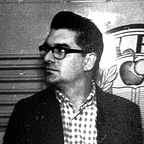Thoughtless Acts?
As the organizer of the Boston Design Thinking Meetup, I am lucky enough to get to prototype workshops and try them out on unsuspecting victims. They don’t always go well, but when they do, it can be inspiring and invigoration for the folks that attend and down-right electric for me.
I recently started a new job at the LOFT (Lab of Forward Thinking), an innovation lab at Manulife/John Hancock. As with any new job, I have been answering a lot of questions about myself and my background, specifically about the role design thinking plays. Because of this, I wanted to share something personal as part of the last Meetup. It just feels like that’s where my head is at…
In 2005 Jane Fulton Suri, Partner Emeritus and Executive Design Director at IDEO, published a small book — 191 pages, full of pictures with almost no words. The first page of Thoughtless Acts? starts,
“Thoughtless acts are all those intuitive ways we adapt, exploit, and react to things in our environment; things we do without really thinking.” It goes on to ask, “What do you see?”
This book fell into my life in 2006 and had a deep impact on me. It changed my perception of observation. It challenged me to really see what was going on around me; to actively notice how we hack our physical environment to make things work for us in ways they were not intended to. It also intruded me to this new world of design thinking, user centeredness, creative problem solving and IDEO.
A recent Boston Design Thinking Meetup was held in the basement of 102 South Street, hosted by a lovely company called Bocoup. We gathered, had a glass of wine or two, and introduced ourselves. I then asked folks to have a look at few images of thoughtless acts. Some I took from Jane’s book; others I had taken myself on the way into work that morning.
The task was to go out in the world, explore the neighborhood, and seek out these, so called, thoughtless acts. I asked them to take pictures and challenge themselves to not settle for the first example they came across, but to find compelling stories and to consider the thought that went into the solution. When they came back to Bocoup, I asked them to put sharpie to paper and individually draw a product concept that might address the problem they found.
They then formed small teams and shared their ideas. Some folks found the same problem, like locking a bike up to a parking meter, for instance, but solved it in many different ways. I then asked each team to move to the whiteboard and collaboratively sketch out one solution to one problem. Then each team shared what they did.
As we debriefed the workshop together, I heard some wonderful insights coming from the group. How looking at solutions that people create for themselves actually revealed that there was a problem and in a much clearer light. Another take away was how easy it was to collaborate with strangers. I even heard one person draw a close parallel between observation and empathy. …drop the mic… I’m out!
Now I ask you, what do you see?
